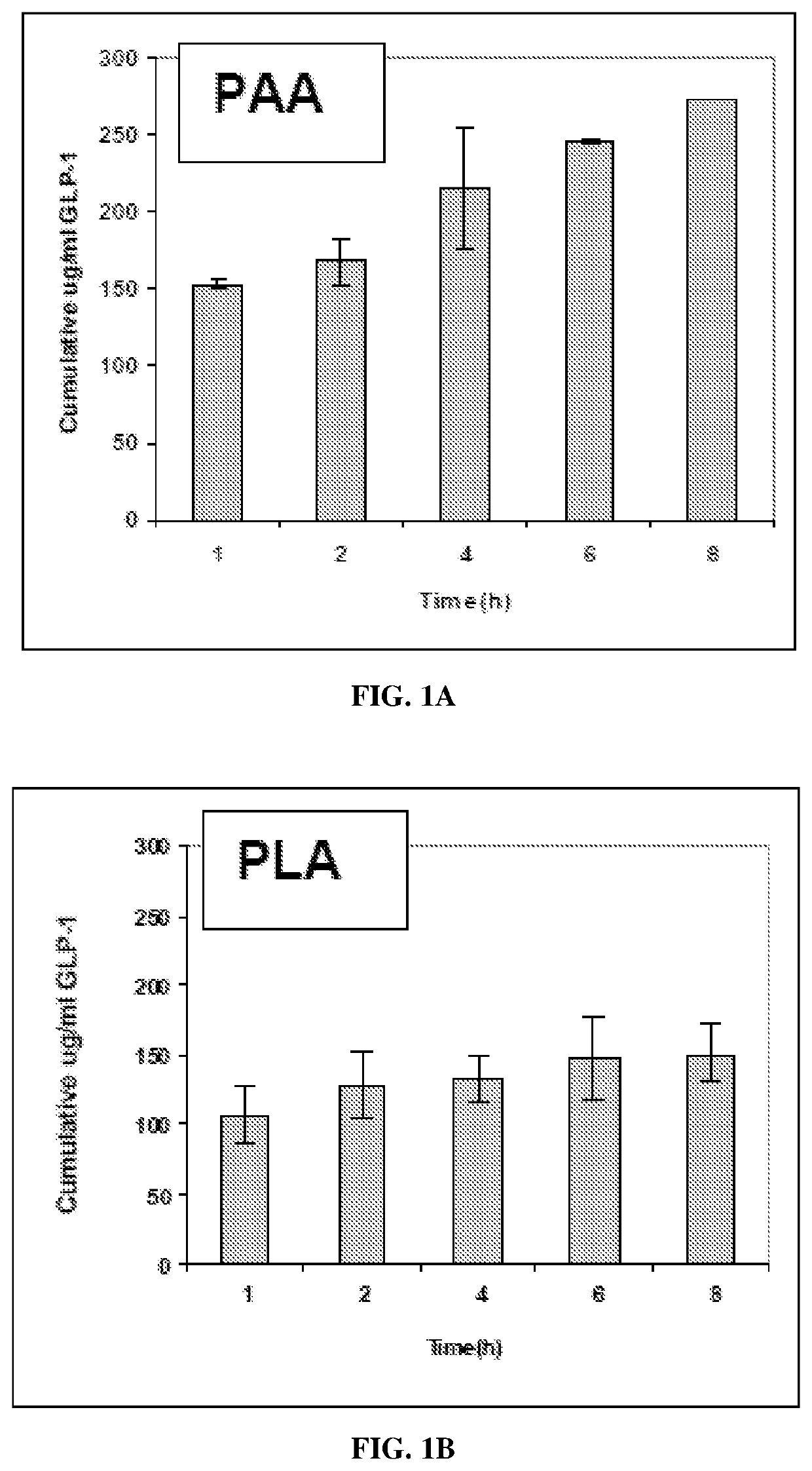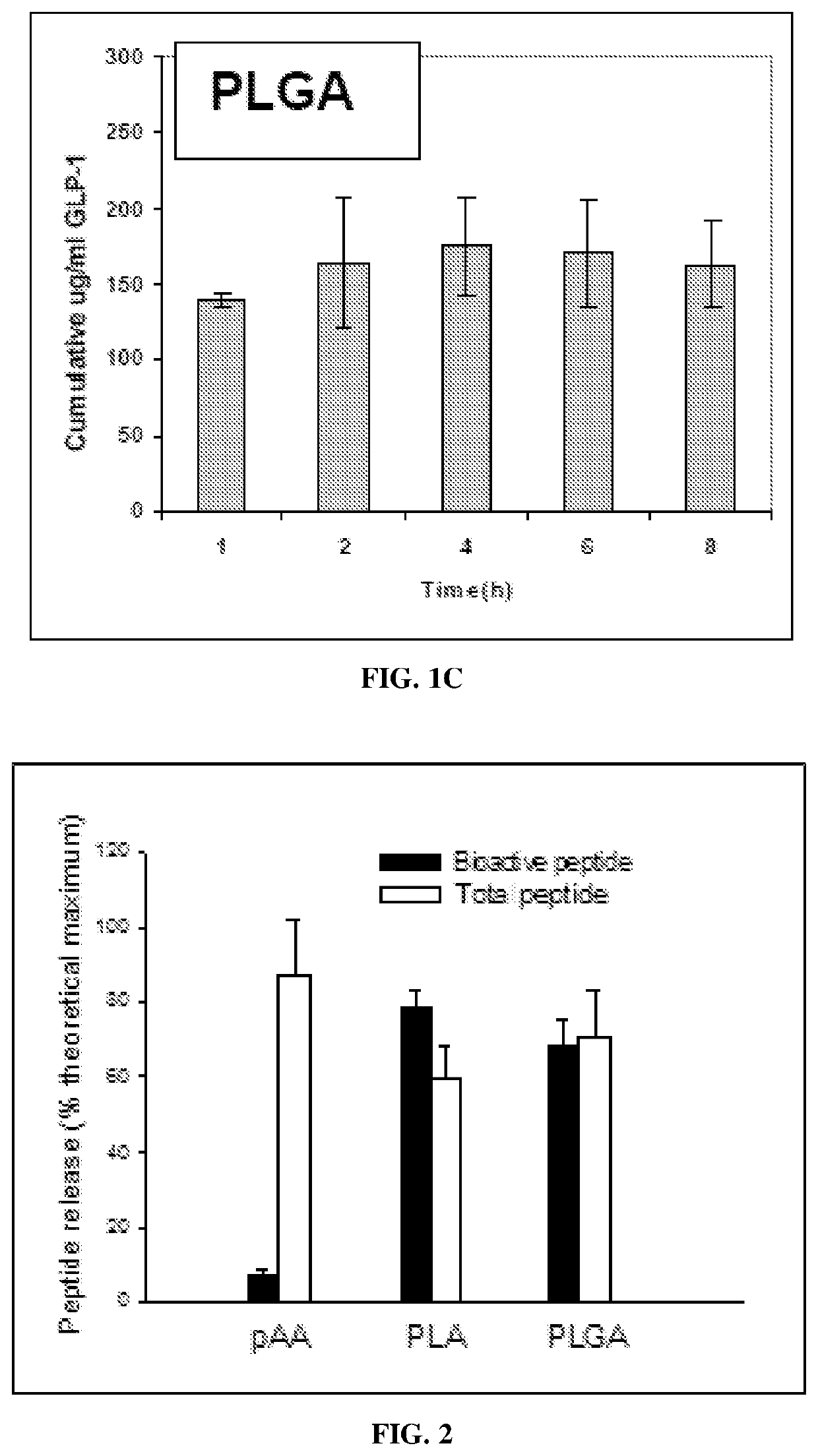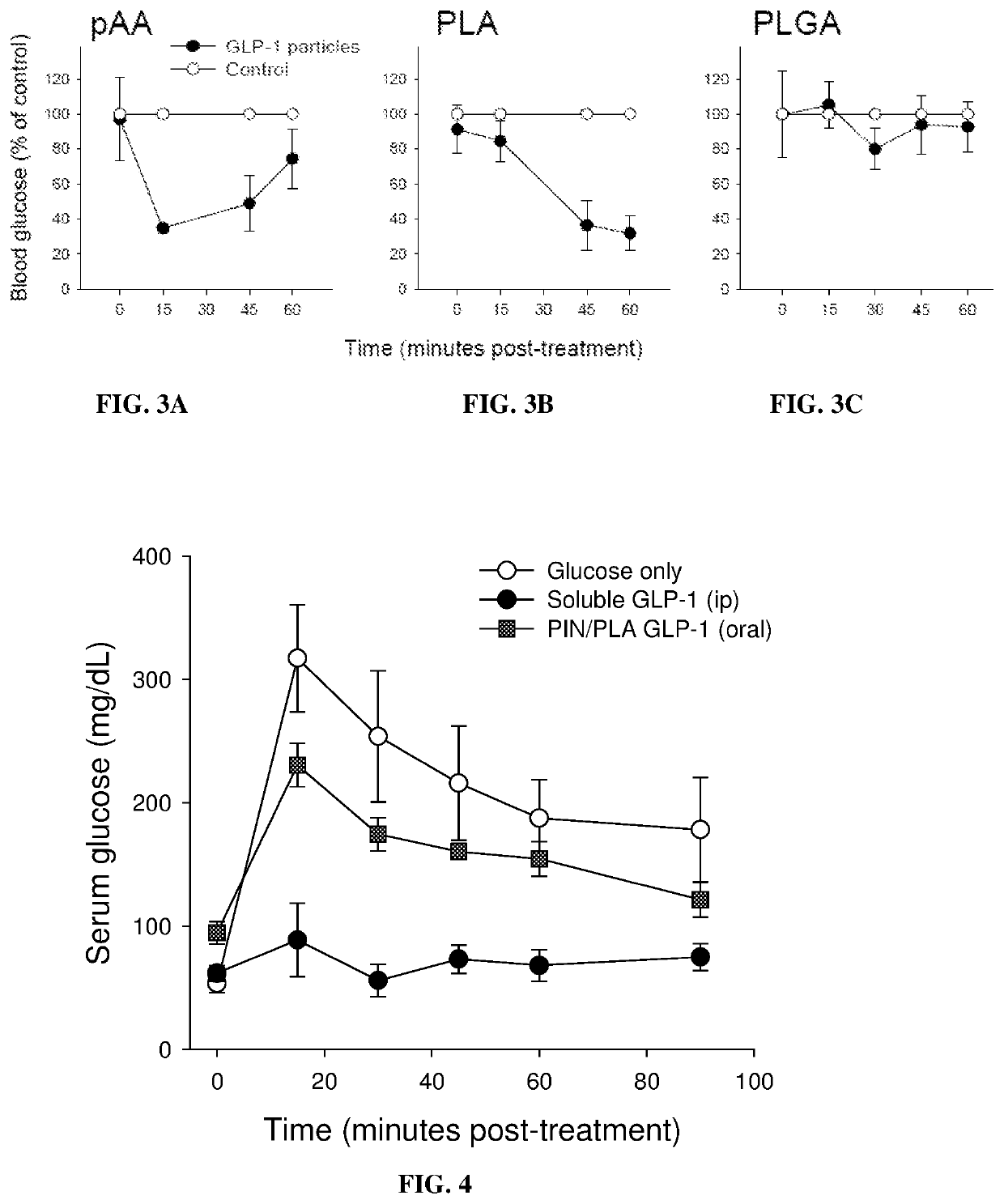Compositions and methods for improving the bioavailability of glp1 and analogues thereof
a technology of glp1 and analogues, applied in the field of drug delivery, to achieve the effect of increasing bioavailability and bioactivity
- Summary
- Abstract
- Description
- Claims
- Application Information
AI Technical Summary
Benefits of technology
Problems solved by technology
Method used
Image
Examples
example 1
GLP-1 that is Encapsulated in Nanoparticles is Released in a Sustained Manner and in an Active Form In Vitro
Materials and Methods
[0247]Nanoparticle Formulations
[0248]GLP-1 (7-36 amide) was encapsulated into different nanoparticle formulations and the formulations were analyzed for release kinetics. Three different base polymers were investigated for use in encapsulating GLP-1. The polymers were; PAA (poly-adipic acid), PLGA (poly-lactic-co-glycolic acid) and PLA (poly-lactic acid). These polymers have been studied for use as biodegradable delivery systems.
[0249]Nanoparticle Preparation
[0250]The preparation of nanoparticles using the PIN method has been described previously in E. Mathiowitz, et al., “Biologically Erodable Microspheres as Potential Oral Drug Delivery Systems,” Nature 386, 410-414, 1997. Briefly, PAA, PLA or PLGA, (Birmingham Polymers, Inc., Birmingham, Ala.) plus recombinant GLP-1 (7-36 amide) (BACHEM Americas, King of Prussia, Pa.) in methylene chloride (Fisher, Pitt...
example 2
GLP-1 Nanoparticles are Biologically Active In Vivo
Materials and Methods
[0260]Formulation Evaluation in an IPGTT Using BKS. Cg WT Mice
[0261]The three different GLP-1 nanoparticle formulations constructed with PAA, PLA and PLGA polymers were assessed in an intraperitoneal glucose tolerance test. Each formulation was administered to four mice. An IPGTT was undertaken to avoid the contribution of endogenous incretins that might occur after the oral administration of a meal. Mice were fed orally with GLP-1-loaded PAA, PLA or PLGA nanoparticles hydrated in 0.1 ml of dH2O using a 22 gauge closed end lacrimal feeding cannula attached to a 1 ml syringe. Mice in control groups received soluble GLP-1 mixed with blank nanoparticles orally. Mice were given an intraperitoneal (i.p.) injection of glucose (3 mg / g body weight in 0.2 ml saline) immediately after the experimental and control nanoparticles were fed to the appropriate mice. Blood was collected from mice before the glucose injection and...
example 3
Orally Delivered GLP-1 Nanoparticles are Effective in Restoring Normo-Glycemia in Leprdb / db Mice
[0274]Materials and Methods
[0275]Efficacy of GLP-1 Nanoparticle Treatment
[0276]To determine the efficacy of GLP-1 nanoparticle treatment on the fasting glucose levels in a diabetic mouse model, Leprdb / db mice were fasted overnight to minimize potential variability in particle absorption that can be caused by the presence of food in the digestive tract. Eight to 10 week old diabetic mice were pre-bled to establish a baseline blood glucose level. At time 0 the PIN / PLA GLP-1 group received 30 mg of PIN / PLA GLP-1 particles (600 ug peptide at 2% loading). Four mice were tested in the soluble peptide group, and received 600 ug of free GLP-1 mixed with blank particles. The control group (four mice) received 30 mg blank PIN / PLA particles. The ability of the GLP-1 nanoparticles to lower blood glucose was then compared to that of orally delivered soluble GLP-1 (7-36 amide) mixed with blank nanopart...
PUM
 Login to View More
Login to View More Abstract
Description
Claims
Application Information
 Login to View More
Login to View More - R&D
- Intellectual Property
- Life Sciences
- Materials
- Tech Scout
- Unparalleled Data Quality
- Higher Quality Content
- 60% Fewer Hallucinations
Browse by: Latest US Patents, China's latest patents, Technical Efficacy Thesaurus, Application Domain, Technology Topic, Popular Technical Reports.
© 2025 PatSnap. All rights reserved.Legal|Privacy policy|Modern Slavery Act Transparency Statement|Sitemap|About US| Contact US: help@patsnap.com



